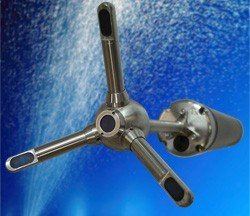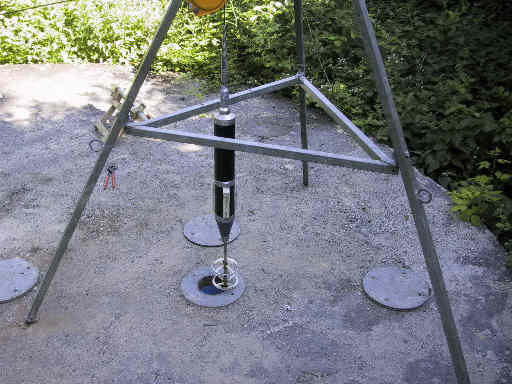VEL3D Instruments Selected for Ocean Observatories Initiative

(Click to enlarge) A photo of Nortek USA’s Vector acoustic Doppler velocimeter that will be used for the Ocean Observatories Initiative. (Credit: Photo provided by Nortek USA)
The Consortium for Ocean Leadership, with funding from the National Science Foundation, has selected Nortek USA, of Boston, MA, and Nobska Development , Inc. of Woods Hole, MA, to provide 3D single point current meter (VEL3D) Instruments for the Ocean Observatories Initiative (OOI).
Using two types of instruments for different depths, one offering Doppler technology and the other offering differential travel time, will allow OOI to optimize installations for measuring currents in diverse oceanographic regimes.
Under a $327,798 contract, Nortek will provide up to 18 VEL3D instruments and under a $117,354 contract Nobska will provide up to nine VEL3D instruments
NortekUSA is an independent company formed in 1999 to provide sales, technical support, and system integration for the Nortek acoustic Doppler current meters, profilers and velocimeters used to measure currents and waves in the ocean, lakes, and laboratory. NortekUSA’s Vector acoustic Doppler velocimeter will be provided for the requirements of the OOI.
The Vector uses coherent Doppler processing, characterized by accurate and nonintrusive velocity data at rates as high as 64 Hz with no appreciative zero offset, to determine a Doppler effect induced phase shift that is converted to velocity by scaling with the speed of sound in water. The measurement of a phase shift is more accurate than direct Doppler frequency determinations and provides pulse coherent systems, such as the Vector, with their characteristic low noise measurements.

(Click to enlarge) A photo of Nobska Development’s MAVS4 being prepared to conduct environmental monitoring in an abandoned mine. The instrument will be used for the OOI program. (Credit: Photo provided by Nobska Development)
Nobska’s MAVS4 current meter will be provided for the requirements of the OOI.The MAVS4 is an acoustic differential travel-time current meter. This technology does not depend upon scatterers in the water to make a velocity measurement and thus will continue to measure velocity in very clear water where Doppler sensors, dependent upon scatterers, may fail to give a continuous signal. Nobska was formed in 1997 to take the MAVS Current Meter design, developed under federal funding, to market to address the needs of low flow, bottom boundary layer measurements. The product then evolved into a general purpose current meter while retaining its ability to measure in low flow, clear water environments
Acoustic differential travel-time sensors also perform well where the water is turbid, either from suspended sediment or from bubbles (methane seeps). Nobska will provide biofouling mitigation coating for the instruments supplied to the OOI, nonetheless the deployment locations for this technology will be selected to minimize the growth of photosynthetic organisms.
The OOI, a project funded by the NSF, is planned as a networked infrastructure of science-driven sensor systems to measure the physical, chemical, geological and biological variables in the ocean and seafloor. As a fully integrated system, OOI will collect and disseminate data on coastal, regional and global scales. Through a unique cyberinfrastructure, OOI will make ocean observing data available to anyone with an internet connection. Greater knowledge of the ocean’s interrelated systems is vital for increased understanding of their effects on biodiversity, climate change, ocean and coastal ecosystems, environmental health and climate.
About the Consortium for Ocean Leadership
The Consortium for Ocean Leadership is a Washington, D.C.-based nonprofit organization that represents 99 of the leading public and private ocean research and education institutions, aquaria and industry with the mission to advance research, education and sound ocean policy. The organization also manages ocean research and education programs in areas of scientific ocean drilling, ocean observing, ocean exploration, and ocean partnerships.
For more information on the OOI please visit the OOI Website or follow us on Facebook and Twitter.
For more information or interviews, contact:
Kerry G. Beck
Director of Communications, OOI
Consortium for Ocean Leadership
Office: (202) 787-1685
kbeck@oceanleadership.org
